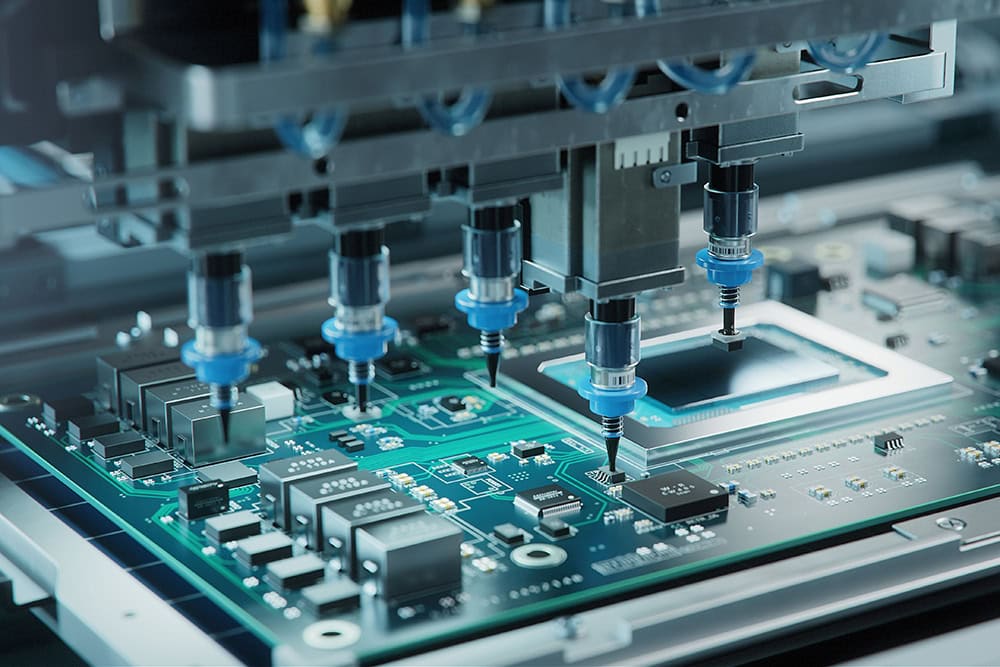As defense and aerospace systems evolve toward more autonomous, intelligent, and networked operations, the convergence of AI, RF, and open standards like SOSA® is redefining embedded sensing at the edge. Platforms once reliant on dedicated signal processors and proprietary software stacks are now turning to modular, AI-accelerated systems that deliver real-time insights in SIGINT, radar, and SATCOM environments.
In this blog, we explore how SOSA®-aligned platforms are enabling next-generation embedded sensing—and how AI is revolutionizing what’s possible in edge RF systems.
The Challenge of Modern RF Sensing
Modern radar and SIGINT platforms must detect, classify, and respond to fast-changing electromagnetic environments. However, traditional systems:
- Rely on fixed-function DSPs that lack adaptability;
- Struggle with low-latency data fusion across sensor channels; and,
- Require bulky, power-hungry enclosures unsuited for forward-deployed operations.
These limitations make AI acceleration and modularity essential.
Why SOSA Matters
The Sensor Open Systems Architecture® (SOSA) is the linchpin for open, interoperable sensor platforms. SOSA-aligned systems:
- Use OpenVPX-based backplanes for scalable compute and RF payloads;
- Enable modular GPU or FPGA integration for AI workloads; and,
- Ensure multi-vendor hardware compatibility for easier upgrades.
With SOSA, integrators can rapidly deploy updated RF sensing capabilities without redesigning the full system.
Integrating AI at the Edge: What It Looks Like
In a SOSA-compliant environment, edge AI processing becomes reality through:
- AI accelerators (GPUs, VPUs, FPGAs) embedded in payload modules
- Sensor fusion to combine RF, EO/IR, and acoustic streams
- Onboard inference for signal classification, anomaly detection, and geolocation
This enables real-time target ID in radar systems, spectrum threat detection in EW environments, and data prioritization in bandwidth-limited SATCOM links.
Use Cases: AI + RF in Action
- Radar: Onboard classification of moving targets in dense urban environments
- SIGINT: Neural networks trained to detect novel RF emissions or spoofing attempts
- SATCOM: AI-driven link adaptation based on interference prediction or spectrum availability
These applications benefit from rugged, SOSA-aligned systems that combine edge AI compute with RF signal chain integration.
Atrenne’s Role in the Future of Embedded Sensing
Atrenne supports this convergence with:
- SOSA-aligned backplanes and payload modules
- AI-ready rugged enclosures
- Thermal and EMI-optimized integration for RF + GPU payloads
From thermal-aware layout to signal integrity in multi-domain environments, Atrenne delivers the physical infrastructure needed for high-performance sensing at the edge.
Smarter, Faster, Modular
The intersection of AI, RF, and SOSA represents the next leap in embedded sensing. Systems built on these foundations are more agile, more upgradeable, and more intelligent—capable of learning, adapting, and acting in real time.
For integrators developing next-gen radar, SIGINT, or SATCOM platforms, the message is clear: modular, AI-enabled architectures aren’t a luxury—they’re a necessity. Atrenne is here to support that transformation.
Explore AI-integrated embedded sensing platforms today.
